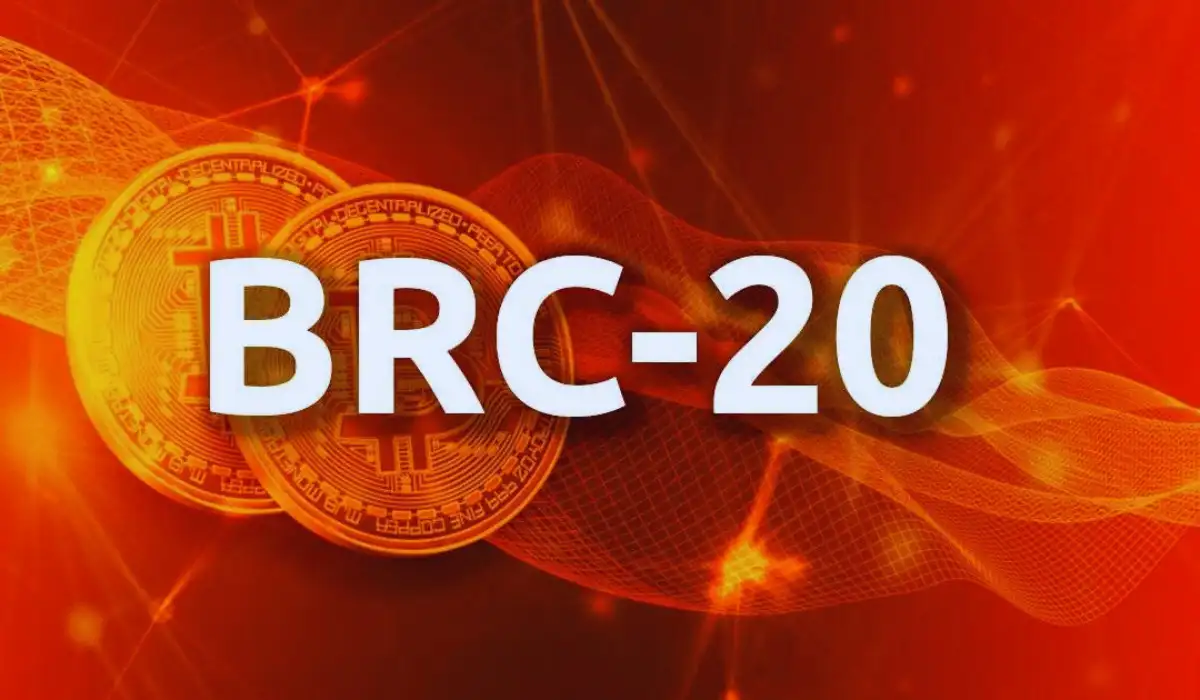What is a BRC-20 Token Standard?
The BRC-20 token standard can be considered an experimental fungible token specially created on the Bitcoin blockchain. It was created in March 2023 by a blockchain analyst named Domo. The BRC-20 token standard is similar to the ERC-20 standard token built on the Ethereum and EVM blockchains. But unlike EVM blockchains, the BRC-20 token standard completely relies on decentralized platforms.
They are created by attaching JSON code on satoshis through the Bitcoin ordinals. Satoshis are the smallest unit of currency on the Bitcoin blockchain. JSON codes define the characteristic features of BRC-20 like minting and distribution. BRC-20 can be utilized and spent like normal Bitcoin assets. The Bitcoin ordinal wallet mints the tokens and also sets a limit for each mint for not exceeding the supply.
The BRC-20 token standard brings a new standard that allows developers to generate fungible tokens. It provides a decent framework for developing and transferring tokens. As they rely on decentralized platforms, they can be supported and used in various applications within the crypto and decentralized finance (DeFi) sectors. The BRC stands for “Bitcoin Request For Comments”, meaning that the new token standard was created to improve and enhance the Bitcoin blockchain networks. This standard mainly aims at opening up new possibilities and opportunities for the BRC-20 tokens.
Working of BRC-20 token standard

BRC-20 tokens are built upon the technology of Bitcoin ordinals. Ordinal systems help to attach additional data like images or texts on a single satoshi. JSON codes are also included in the satoshi tokens with the help of the ordinal inscriptions. A satoshi token with JSON code inscribed on it becomes Ordinal which makes it non-fungible and can be considered as an equivalent of Bitcoin’s NFTs.
BRC-20 tokens also adopt a similar concept to Bitcoin NFTs. This standard works by incorporating fungibility into the tokens. Like ordinal systems, BRC-20 tokens also contain extra data and can carry equal value to the other tokens. Even though the tokens are created on the ordinal systems, BRC-20 tokens have different features and purposes. It serves as a foundation for creating a diversified crypto ecosystem.
How to use a BRC-20 token?
Creating a token: The developing process of BRC-20 begins with smart contacts on the blockchain network. Smart contracts are important documents that provide the name, properties, and supply demands of the token. The contracts should present details in such a way that they can interpreted by Bitcoin nodes.
Issuing and distribution of tokens: After the BRC-20 tokens have been created, they can be further distributed to the users. The tokens are transferred securely using Bitcoin wallet addresses. Users can easily accelerate the transactional process of tokens using Bitcoin addresses.
Transferring tokens: The transferring process is similar to the Bitcoin transactions. The user will need the recipient’s wallet address to transfer the tokens. Tokens can be transferred after confirming the transaction details.
Benefits of BRC-20 token standard
Compatibility of Bitcoin: Bitcoin is one of the most popular and highly trusted crypto platforms. Thereby it is easier to build tokens on the Bitcoin blockchain. The BRC-20 token standard lets people easily create tokens on the platform. Brc-20 tokens also work well with the wallets and exchanges existing on the Bitcoin blockchain making it easier to collaborate with a new standard.
Increased security: Since BRC-20 tokens are operated on the Bitcoin blockchain they are equipped with robust security features. Bitcoin networks are known for their advanced security features. This factor makes the tokens safe from potential malicious attacks.
Decentralized nature of the blockchain: Bitcoin blockchain operates on decentralized platforms and this becomes an advantage for the tokens. In decentralized platforms, no single authority can control the transnational and supply process of the tokens. Tokens can thereby escape the risks of manipulation or censorship.
Limitations of BRC-20 tokens
Issues regarding scalability: Scalability issues limit and restrict the practical use of Bitcoin tokens daily. Bitcoin networks cannot handle high transaction volumes. This factor gradually leads to slower transaction processes and increased fees.
Uncertainty regarding regulatory laws: Many cryptocurrencies still remain to be sanctioned by the regulatory laws passed by the government. The legal status of BRC-20 remains unknown. This factor poses a challenge to investors who tend to avoid the risk of choosing such tokens.
User adoption and awareness: Large-scale adoption and awareness of a cryptocurrency a crucial factors for it to thrive in the industry. BRC-20 tokens are relatively new in the crypto sphere and may encounter difficulty in being recognized and accepted by a huge audience.
The Future of BRC-20 Tokens
According to the experts, BRC-20 tokens are expected to revolutionize the landscape of the Bitcoin blockchain. Despite the various challenges, these tokens can unlock new pathways for the Bitcoin ecosystem. The evolution of the Bitcoin blockchain will also help to increase the usage of the tokens among the users.
The BRC-20 tokens also have the potential to tokenize real-world assets. There are also high chances of DeFi projects to start collaborating with BRC-20 tokens. BRC-20 tokens are also expected to be used to facilitate personalized payments between two users. Even though the tokens have not gained much popularity in the present times, with the rising popularity of the Bitcoin blockchain BRC-20 tokens are expected to be embraced and utilized by many developers.

